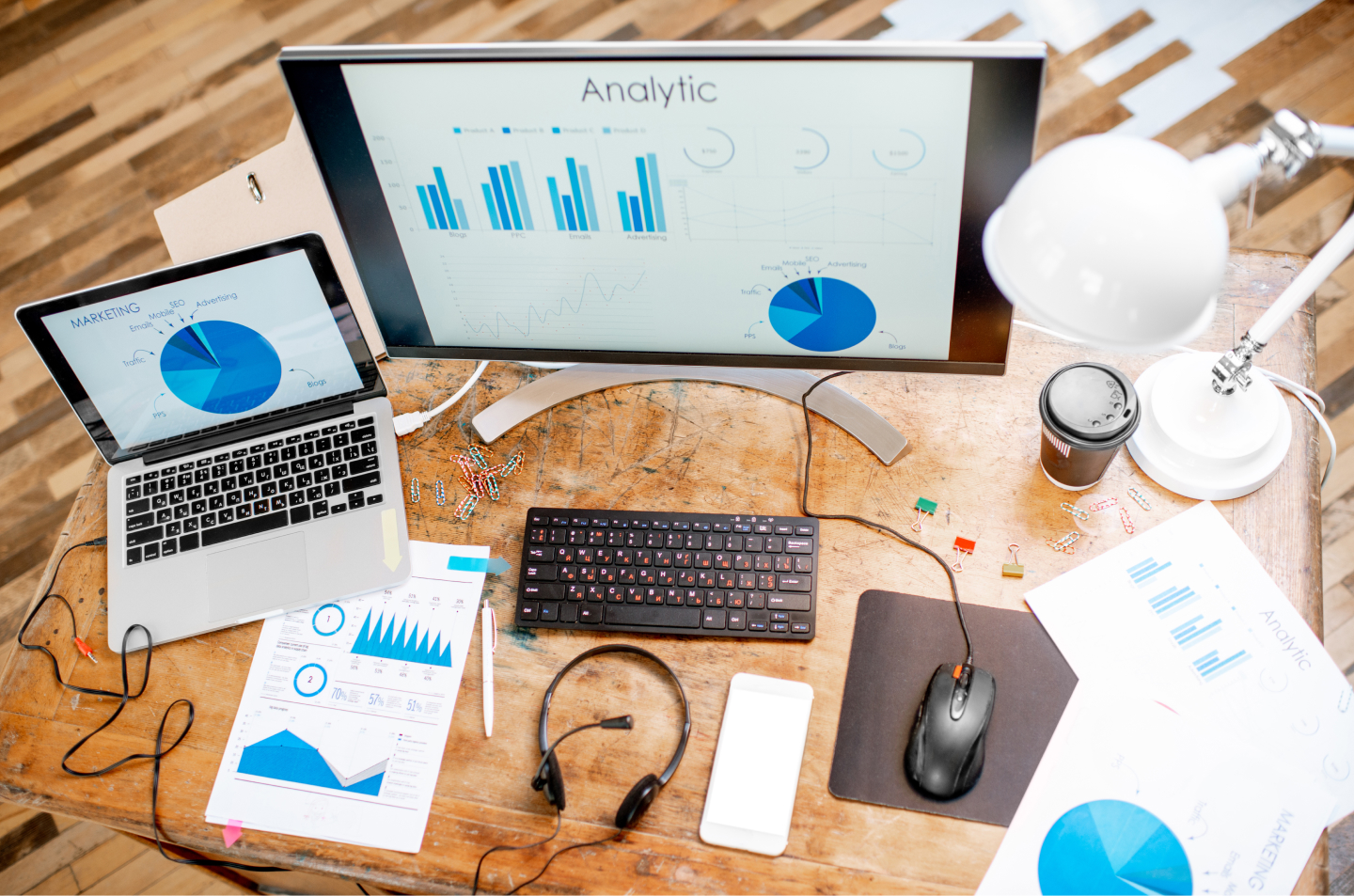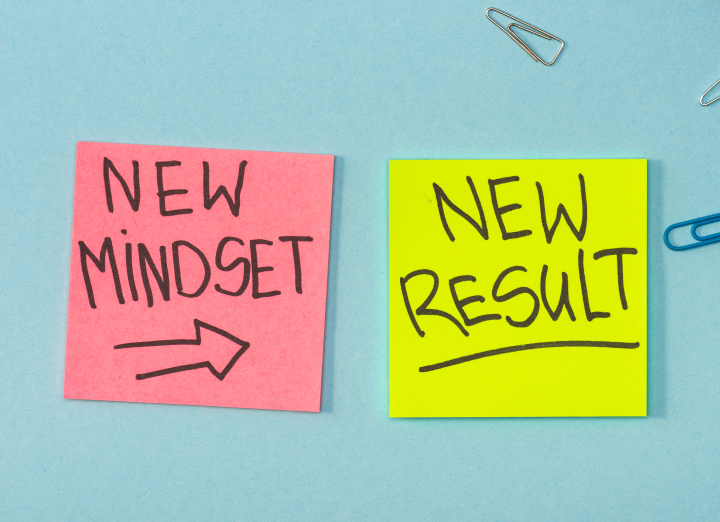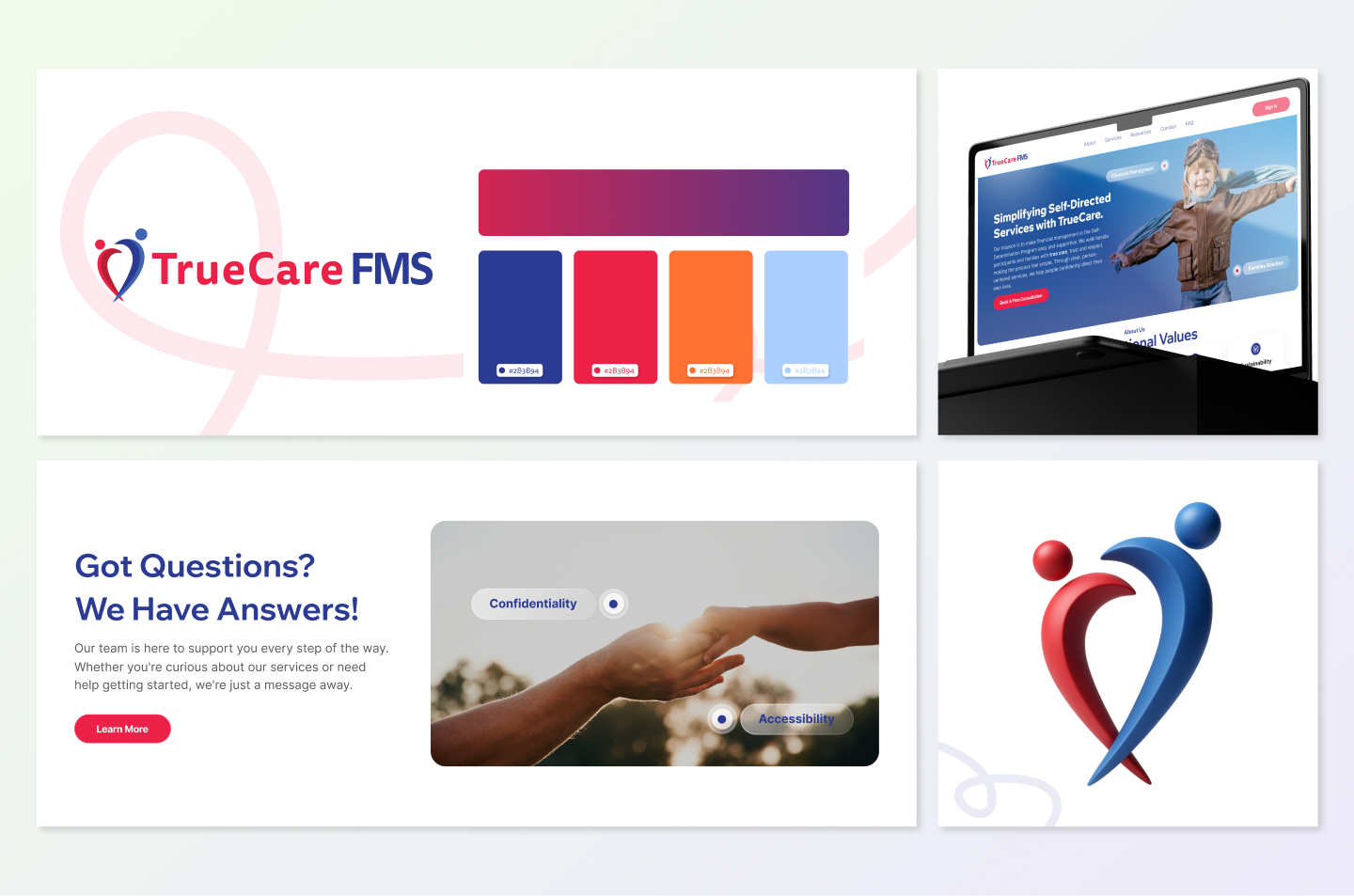Maximizing ROI with Google Ads Strategies

In August 2025, Google Ads released a significant update aimed at enhancing user experience and advertiser efficiency. This update introduced several new features and optimizations designed to streamline campaign management and improve targeting precision.
Improved Machine Learning Algorithms
Google's commitment to leveraging artificial intelligence took a significant leap with the August 2025 update. The enhancement of machine learning algorithms means that advertisers can now benefit from unprecedented targeting accuracy. These algorithms analyze user behavior patterns with greater depth, allowing your ads to be shown to the most relevant audiences. This precise targeting not only enhances engagement but also increases the likelihood of conversion, ultimately boosting ROI.
Machine learning now adapts more quickly to changes in user behavior, providing real-time adjustments to ad delivery. This means that as user interests shift, your campaigns can automatically realign to maintain relevance. This dynamic adaptability ensures that your ads are always positioned to reach the right audience at the optimal moment.
Moreover, the update has improved the predictive capabilities of machine learning. By analyzing vast amounts of data, Google Ads can now anticipate audience behavior more effectively, enabling advertisers to proactively adjust their strategies. This foresight offers a competitive advantage, allowing you to stay ahead of market trends and consumer demands.
Enhanced Automation Tools
The August 2025 update also focused on bolstering automation tools to streamline campaign management. Advertisers now have access to a suite of automation features that simplify the complexities of bid adjustments, ad placements, and creative optimizations. This level of automation not only saves time but also enhances strategic decision-making.
One of the standout features is the ability to automate bid strategies based on specific campaign goals. Whether your objective is to maximize conversions, enhance brand awareness, or optimize return on ad spend (ROAS), these tools allow for precise adjustments that align with your targets. This ensures that your budget is allocated efficiently, minimizing waste and maximizing impact.
In addition to bid automation, creative optimization has seen significant advancements. Advertisers can now automate the testing of different ad creatives, allowing the system to identify which variations perform best. This continuous optimization cycle enables you to refine your messaging and visuals for maximum engagement and conversion.
Better Integration with Google Analytics
The integration between Google Ads and Google Analytics has reached new depths, providing advertisers with a more holistic view of user behavior and campaign performance. This seamless connectivity allows for comprehensive data analysis, offering insights that were previously unattainable.
With the enhanced integration, advertisers can now track user interactions across multiple touchpoints, from initial ad engagement to final conversion. This end-to-end visibility provides a clearer understanding of the customer journey, enabling you to identify key moments that drive conversions.
Furthermore, the integration allows for advanced audience segmentation based on analytics data. This means you can create highly targeted campaigns that are tailored to specific audience behaviors and preferences. By aligning your advertising strategy with detailed user insights, you can deliver more personalized and impactful ad experiences.
Advanced Reporting Features
The August 2025 update introduced cutting-edge reporting features that offer advertisers more granular insights into campaign performance. These advanced reporting tools empower advertisers to dissect their campaigns with unprecedented detail, enabling the identification of trends and areas for improvement.
One of the notable features is customizable reporting dashboards, which allow advertisers to focus on metrics that matter most to their specific goals. Whether you're tracking conversion rates, cost per acquisition, or engagement metrics, these dashboards provide a tailored view of your campaign's performance.
Moreover, the update includes predictive analytics capabilities within reporting tools. By analyzing historical data and identifying patterns, these features can forecast future campaign outcomes. This forward-looking approach enables advertisers to make data-driven decisions and proactively adjust strategies to maximize results.
The new reporting features also emphasize collaboration and sharing. Advertisers can easily share insights and reports with team members or stakeholders, fostering a collaborative environment for strategic planning and decision-making. This transparency ensures that everyone involved in the advertising process is aligned and informed.
Partnering with a Google Ads Agency

While understanding the latest updates is essential, implementing these changes effectively can be challenging without the right expertise. This is where a Google Ads agency can be invaluable. Partnering with an agency provides several advantages:
Expertise and Experience
Google Ads agencies are comprised of professionals who specialize in digital advertising. Their expertise extends beyond understanding updates; they possess the strategic know-how to harness these changes for maximum impact. Agencies stay abreast of the latest trends, ensuring that their strategies are always aligned with current best practices.
The experience of an agency is a valuable asset. Having worked with diverse clients across various industries, agencies have a deep understanding of what strategies yield results. This experience allows them to craft tailored campaigns that address the unique needs and goals of each client, maximizing ROI while minimizing wasted ad spend.
Additionally, agencies maintain close relationships with Google representatives, giving them access to exclusive insights and beta features. This insider knowledge can provide a competitive edge, allowing your campaigns to benefit from cutting-edge tools and strategies before they become widely available.
Access to Advanced Tools
One of the significant advantages of partnering with a Google Ads agency is access to advanced tools and resources that may not be available to individual advertisers. Agencies invest in robust technologies and platforms that enhance campaign management capabilities, offering deeper insights and more sophisticated analysis.
These tools include advanced analytics platforms that provide comprehensive data visualization and reporting. With these insights, agencies can identify trends, optimize performance, and uncover opportunities for improvement. This level of analysis empowers advertisers to make informed decisions that drive better results.
Moreover, agencies leverage proprietary tools that automate and streamline various aspects of campaign management. From bid automation to audience segmentation, these tools enhance efficiency and precision, ensuring that your campaigns are always optimized for success.
Focus on Core Business
Outsourcing your Google Ads management to an agency allows you to focus on what you do best—running your business. By entrusting experts with the intricacies of digital advertising, you can allocate your time and resources more efficiently, concentrating on core business operations and strategic growth initiatives.
This delegation not only alleviates the burden of campaign management but also ensures that your advertising efforts are in capable hands. Agencies provide regular performance updates and transparent reporting, allowing you to stay informed without being overwhelmed by the details.
Furthermore, partnering with an agency fosters collaboration and strategic alignment. By working closely with your agency, you can ensure that your advertising strategy aligns with your overall business objectives. This synergy enhances the effectiveness of your campaigns and drives tangible results.
Strategies for Maximizing ROI

To make the most of your Google Ads campaigns, consider implementing the following strategies:
1. Optimize Your Ad Copy
Creating compelling ad copy is crucial for attracting clicks and conversions. Focus on writing clear, concise, and engaging copy that highlights your unique selling proposition (USP). Remember to include strong calls-to-action (CTAs) to guide users towards desired actions.
Effective ad copy starts with understanding your audience. Conduct thorough research to identify their pain points, desires, and motivations. This understanding allows you to craft messages that resonate, capturing their attention and encouraging them to engage with your brand.
In addition to highlighting your USP, consider incorporating emotional triggers into your ad copy. Emotionally charged language can evoke feelings that compel users to take action. Whether it's creating a sense of urgency or appealing to their aspirations, emotional triggers can significantly impact ad performance.
Moreover, continually test and refine your ad copy. A/B testing allows you to experiment with different headlines, descriptions, and CTAs, identifying the combinations that yield the highest engagement and conversion rates. By regularly optimizing your ad copy, you can ensure that your messaging remains fresh, relevant, and effective.
2. Utilize Ad Extensions
Ad extensions add more information to your ads, making them more attractive to potential customers. Use extensions like site link, callout, and structured snippets to provide additional context and encourage interaction.
Site link extensions allow you to direct users to specific pages on your website, enhancing the user experience by providing quick access to relevant content. This not only improves navigation but also increases the likelihood of conversion by guiding users to high-value pages.
Callout extensions enable you to highlight key features and benefits of your product or service. By succinctly showcasing what sets your offering apart, you can capture users' attention and differentiate your brand from competitors.
Structured snippet extensions provide additional context by displaying specific aspects of your products or services. This added detail helps users make informed decisions, increasing the chances of engagement and conversion.
Additionally, consider using location extensions to attract local customers. These extensions display your business address and provide directions, making it easier for users to visit your physical location. By leveraging location extensions, you can drive foot traffic and enhance your local presence.
3. Implement Remarketing Campaigns
Remarketing allows you to target users who have previously interacted with your website or ads. This strategy helps keep your brand top-of-mind and encourages users to return and complete a purchase.
Effective remarketing campaigns start with segmenting your audience based on their interactions. Create tailored messages for users who abandoned their shopping carts, visited specific product pages, or engaged with your content. By delivering personalized messages, you can re-engage users and guide them towards conversion.
Dynamic remarketing takes personalization a step further by displaying ads featuring products or services users viewed on your website. This level of customization enhances relevance and encourages users to revisit your site to complete their purchase.
Consider using frequency capping in your remarketing campaigns to avoid overwhelming users with excessive ads. This ensures that your brand remains memorable without becoming intrusive, maintaining a positive user experience.
Moreover, leverage cross-channel remarketing to reach users across different platforms. By engaging users on social media, search engines, and display networks, you can reinforce your brand message and increase the likelihood of conversion.
4. Leverage Audience Targeting
With the enhanced targeting capabilities introduced in the August 2025 update, leverage audience targeting to refine who sees your ads. Use demographic targeting, in-market audiences, and custom intent audiences to reach those most likely to convert.
Demographic targeting allows you to tailor your campaigns based on age, gender, household income, and other demographic factors. By aligning your messaging with the characteristics of your target audience, you can create more relevant and impactful ad experiences.
In-market audiences enable you to reach users who are actively researching or considering products or services similar to yours. By targeting users in the decision-making phase, you can increase the likelihood of conversion and drive higher-quality leads.
Custom intent audiences provide a powerful way to reach users with specific interests or purchase intentions. By creating custom segments based on keywords, URLs, and apps, you can deliver highly targeted ads that resonate with users' unique needs and preferences.
Additionally, consider using affinity audiences to reach users based on their interests, lifestyles, and habits. This approach allows you to build brand awareness and engage users who share similar values and interests.
5. Monitor and Adjust Bids Regularly
Regularly monitoring and adjusting your bids based on performance data ensures that your ads remain competitive in auctions. Use automated bidding strategies to optimize for conversions or return on ad spend (ROAS).
Start by setting clear bidding goals that align with your campaign objectives. Whether you're aiming to maximize clicks, conversions, or ROAS, having defined goals provides a framework for bid adjustments.
Leverage automated bidding strategies, such as target CPA (cost per acquisition) or target ROAS, to optimize bids in real-time. These strategies use machine learning to adjust bids based on auction data, ensuring that your budget is allocated effectively to achieve your desired outcomes.
Regularly review performance metrics to identify trends and areas for optimization. Analyze data on impressions, clicks, conversions, and cost metrics to assess the effectiveness of your bidding strategy. Use these insights to make informed adjustments that enhance campaign performance.
Consider implementing bid adjustments for specific devices, locations, or times of day. By tailoring your bids to align with user behavior patterns, you can increase the relevance and effectiveness of your ads.
Measuring Success with Google Ads

To determine the effectiveness of your Google Ads campaigns, it's essential to measure and analyze key performance indicators (KPIs). Here are some KPIs to focus on:
Conversion Rate
The conversion rate measures the percentage of users who take a desired action after clicking on your ad. A higher conversion rate indicates a more effective campaign.
Improving conversion rates starts with ensuring that your landing pages are optimized for user experience. Focus on creating clear, compelling, and user-friendly landing pages that guide users towards conversion. This includes having a strong headline, persuasive copy, and a prominent call-to-action.
Conduct A/B testing on landing pages to identify elements that drive higher conversions. Experiment with different layouts, colors, and messaging to determine the most effective combinations. By continually optimizing your landing pages, you can increase the likelihood of conversions and improve overall campaign performance.
Additionally, consider implementing conversion tracking to gain insights into user behavior post-click. Understanding how users interact with your site after clicking an ad provides valuable data for optimizing your conversion funnel.
Cost Per Conversion
This metric shows how much you're spending to achieve each conversion. Lowering your cost per conversion can improve your ROI.
Start by analyzing the cost per conversion across different campaigns, ad groups, and keywords. Identify high-performing elements and allocate more budget towards them while reducing spend on underperforming areas.
Consider optimizing your keyword strategy to improve cost efficiency. Focus on high-intent keywords that are more likely to result in conversions, and use negative keywords to filter out irrelevant traffic.
Moreover, adjust your bidding strategy to align with your cost per conversion goals. Automated bidding strategies, such as target CPA, can help you achieve cost efficiency by optimizing bids based on performance data.
Regularly review your ad creatives and messaging to ensure they resonate with your target audience. By delivering relevant and engaging ads, you can increase click-through rates and conversions, ultimately reducing your cost per conversion.
Click-Through Rate (CTR)
CTR measures the percentage of users who click on your ad after seeing it. A higher CTR indicates that your ad is engaging and relevant to your target audience.
Improving CTR starts with crafting compelling ad headlines and descriptions. Focus on creating attention-grabbing headlines that highlight the benefits and value of your product or service. Use persuasive language and emotional appeals to capture users' interest.
Consider using ad extensions to enhance the visibility and appeal of your ads. By providing additional information and context, extensions can increase the likelihood of users clicking on your ad.
Conduct regular A/B testing on ad creatives to identify the most effective elements. Test different variations of headlines, descriptions, and CTAs to determine which combinations yield the highest CTR.
Monitor CTR metrics across different campaigns and ad groups to identify trends and areas for improvement. Use these insights to refine your targeting and messaging strategies, ensuring that your ads resonate with your audience.
Return on Ad Spend (ROAS)
ROAS calculates the revenue generated for every dollar spent on advertising. A higher ROAS indicates a more profitable campaign.
To improve ROAS, start by analyzing the performance of your campaigns, ad groups, and keywords. Identify high-performing elements and allocate more budget towards them to maximize returns.
Consider optimizing your targeting strategies to reach high-value audiences. By focusing on users who are more likely to convert, you can increase revenue and improve ROAS.
Leverage remarketing campaigns to re-engage users who have shown interest in your products or services. By keeping your brand top-of-mind, you can encourage repeat purchases and increase customer lifetime value.
Regularly review your bidding strategy to ensure that your budget is allocated efficiently. Automated bidding strategies, such as target ROAS, can help you optimize bids based on performance data, maximizing revenue while minimizing costs.
Adapting to Future Updates

The digital advertising landscape is constantly evolving, and staying ahead requires adaptability. Here are some tips for adapting to future Google Ads updates:
Stay Informed
Regularly check Google's official blog and industry publications for announcements about updates and new features. Staying informed allows you to prepare and adjust your strategies accordingly.
Subscribe to newsletters and follow industry experts on social media to receive timely updates and insights. Engaging with thought leaders can provide valuable perspectives and strategies for adapting to changes.
Participate in webinars and online courses to deepen your understanding of new features and best practices. Continuous learning ensures that you remain proficient in navigating the evolving digital advertising landscape.
Additionally, consider joining online forums and communities where advertisers share experiences and insights. Collaborating with peers can foster knowledge exchange and help you stay ahead of industry trends.
Test and Experiment
With each update, test new features and strategies to see what works best for your campaigns. Experimentation can lead to innovative approaches that maximize your ROI.
Create a testing framework to systematically evaluate new features and strategies. Define clear objectives and key performance indicators (KPIs) to measure the success of your tests.
Start with small-scale tests to minimize risk and gather initial insights. Once you identify successful strategies, gradually scale them to maximize impact and optimize performance.
Document your testing process and outcomes to build a repository of insights and best practices. This documentation serves as a valuable reference for future experimentation and decision-making.
Seek Professional Guidance
If you're unsure how to adapt to new updates, consider seeking guidance from a Google Ads agency or consultant. Their expertise can help you navigate changes and optimize your campaigns effectively.
Engage with agencies or consultants who have a track record of success in adapting to industry changes. Their experience and insights can provide valuable guidance on leveraging new features and strategies.
Consider scheduling regular consultations to discuss your campaign performance and explore opportunities for improvement. Professional guidance ensures that your campaigns remain competitive and aligned with industry best practices.
Additionally, stay in touch with your Google representative for exclusive insights and recommendations. Their knowledge and support can help you make informed decisions and stay ahead of the competition.
Conclusion

Maximizing ROI with Google Ads requires a combination of understanding the latest updates, implementing effective strategies, and continuously measuring performance. Whether you choose to manage your campaigns in-house or partner with a Google Ads agency, staying informed and adaptable is key to success. By leveraging the insights and strategies outlined in this article, you can enhance your digital advertising efforts and achieve your business goals.
In today's rapidly evolving digital landscape, staying ahead of the competition demands agility and a commitment to continuous improvement. Embrace the power of data-driven decision-making and leverage the latest advancements in Google Ads to drive meaningful results for your business.
Remember that success in digital advertising is not a one-time achievement but an ongoing journey. By consistently optimizing your campaigns, experimenting with new approaches, and staying informed about industry trends, you can position your brand for sustained growth and success.
As you navigate the complexities of Google Ads, keep your business objectives at the forefront of your strategy. Align your advertising efforts with your broader goals, and remain open to adapting and evolving as the digital landscape continues to change. With the right approach and a focus on maximizing ROI, you can unlock the full potential of Google Ads and achieve your desired outcomes.
.png)



